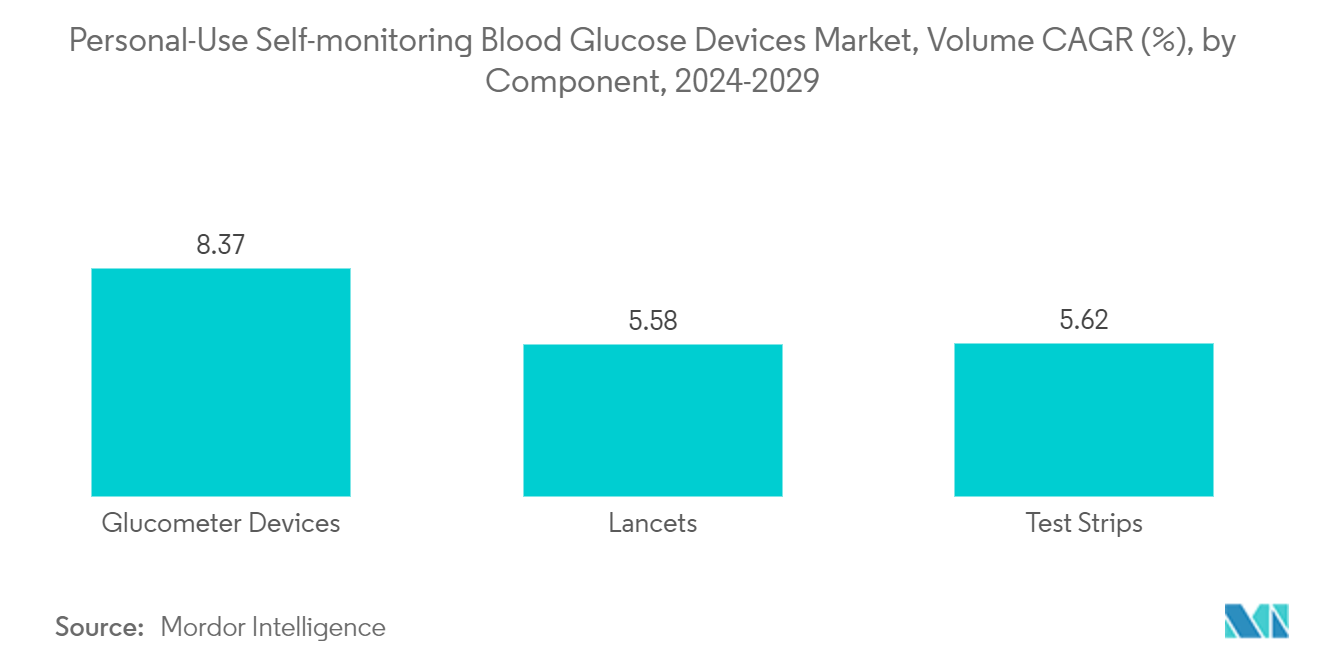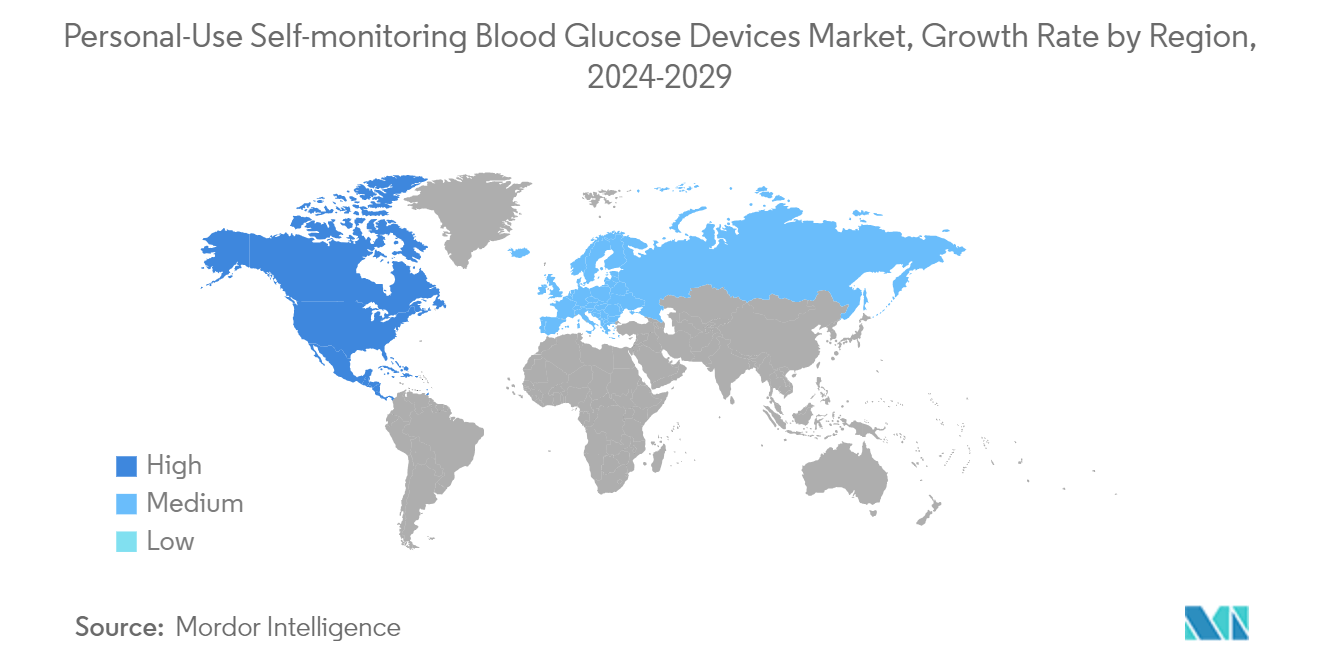Market Trends of Personal-Use Self-monitoring Blood Glucose Devices Industry
The glucometer devices segment is expected to register the highest CAGR over the forecast period
The meters segment is expected to account for the highest CAGR of about 8.2% over the forecast period owing to the increasing adoption of glucometers in home care settings, the growing preference for home-based self-monitoring, and recent product launches of advanced glucometers.
Glucometers are simple, portable, and convenient blood sugar monitoring devices that are used for point-of-care management. A drop of blood from the patient's finger is dropped onto a paper test strip, which is impregnated with a glucose-specific enzyme that reacts with the glucose in the blood. The strip is inserted into the blood glucose meter and is read using either reflectance photometry or electrochemical technology to determine the glucose level in the blood. These monitors are also used to monitor blood glucose levels in clinical settings. In general, portable glucose devices have improved in precision and accuracy with each generation.
Self-monitoring blood glucose devices are garnering widespread adoption due to the availability of reimbursement options for glucose meters. Glucose meter devices must be replaced within six to eight months and are expensive. As a result, most people prefer health insurance plans that cover most of their total expenditure on healthcare devices. Such schemes cover the costs of diabetes testing supplies, test strips, and blood glucose meters. For example, Medicare, the federal health insurance program in the United States, covers approximately 80% of the cost of BGM devices for diabetic people.
The market players are adopting various strategies such as collaborations, partnerships, mergers, acquisitions, and expansions to increase market share. For instance, in May 2021, Roche Diabetes Care Canada announced a collaboration with Ellerca Health, a Toronto-based company dedicated to improving patient care through innovation and technology. The partnership included the launch of Accu-Chek and 360Care, combining Roche's Accu-Chek Guide blood glucose meter, customized home delivery of testing strips, and Ellerca's self-management digital program, 360Care, which empowers patients to be in control of their treatment schedule with access to a team of health coaches.
Thus, owing to the above-mentioned factors, the market is expected to grow over the forecast period.

North America is expected to dominate the Personal-Use Self-monitoring Blood Glucose Devices Market over the forecast period
The North American region is expected to register the highest CAGR of about 6.5% in the personal-use self-monitoring blood glucose devices market over the forecast period.
In the North American region, the prevalence of diabetes has increased dramatically during the last two decades, a fact driven by the increased prevalence of obesity and lifestyle changes owing to less physical activity, unhealthy food habits, and other lifestyle factors. The American Diabetes Association (ADA), the Endocrine Society, the American College of Physicians, the American Academy of Pediatrics, the Society of General Internal Medicine, and the National Academy of Medicine published statements and issued calls to action to address social determinants of health at the individual, organizational, and policy levels. In 2021, the ADA also published a scientific review describing the associations between SDOH and diabetes risk and outcomes, focusing on socioeconomic status, health literacy, the food environment, food insecurity, and neighborhood and physical environments, among other topics.
The Centers for Disease Control and Prevention's National Diabetes Statistics Report 2022 estimated that more than 130 million adults are living with diabetes or prediabetes in the United States. Type-2 diabetes is more common, and diabetes is more consequential among communities of color, those who live in rural areas, and those with less education, lower incomes, and lower health literacy.
In the United States, there are several innovations in diabetes management platforms by startups, like Glooko, OneDrop, Verily, Vacate, Insulet, Noom, Bigfoot Biomedical, Virta Health, Diabeloop, and Orgenesis, that have launched in the market. The growing awareness among people regarding advanced diabetes devices is improving the adaptability of PoCT glucose testing devices. Leading manufacturers are focusing on technological innovations and developing advanced products to gain a substantial market share.
Therefore, the studied market is anticipated to witness growth over the analysis period due to rising prevalence and the aforementioned factors.


